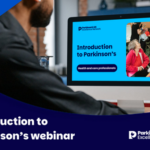In between the Dover Travel Centre’s Upper Crust sandwich bar
and a Sea France information desk is a cream door. A sign on it
warns: “No entry to passengers”. The door leads to the UK’s first
induction centre for new asylum seekers.
The language of asylum processing is confusing. Reception centres
are facilities run by local authorities to receive asylum seekers
who have been dispersed to their area. Induction centres, by
contrast, are the start of the chain. They are the government’s
responsibility and are run in partnership with local voluntary and
statutory agencies. Asylum seekers are expected to spend up to 10
days in these centres before being handed over to the National
Asylum Support Service for dispersal. During this time they are
briefed on the asylum process, told what entitlements and legal
rights they have, given health checks and allocated
accommodation.
The concept of induction centres was first raised in the white
paper Secure Borders, Safe Haven,1 and
confirmed in October 2001 by home secretary David Blunkett, when he
told parliament that a series of centres were being established
nationwide. The Dover centre was initially a pilot, set up in
January 2002, and is now permanent. Recently, the government
announced that a reception centre in Leeds will be converted into
the country’s second induction centre by the autumn.
For many, “induction centre” conjures up images of razor wire and
prison-like warehouses. Dover’s induction centre is nothing like
this. Its suite of offices in Dover’s eastern dock is run jointly
by the Home Office and asylum charity Migrant Helpline. The centre
arranges short-term accommodation for up to 800 people: families
and single women stay in three hotels on Dover’s seafront, single
men stay in Ashford, and a hotel in Margate caters for all
clients.
In the middle of the centre’s reception room, three rows of black
plastic chairs face a television showing the film George in the
Jungle. A poster of the alphabet hangs on the wall and several
children play with toys. About 30 asylum seekers are waiting to see
one of the two Migrant Helpline caseworkers who will register their
details, allocate them emergency accommodation and give them a
client pack in one of seven languages. The pack contains a diary of
the briefings they must attend, fact sheets and Home Office
documents. After this, asylum seekers see another caseworker to
fill in their Nass claim form.
Some have been referred to the induction centre by immigration
service staff at the port. Others are found in the back of lorries
by staff using heartbeat or carbon monoxide monitoring equipment or
by sniffer dogs. As fewer people are now entering the UK through
Dover this way, Nass’s Birmingham office and other agencies have
started to refer clients to the centre.
Migrant Helpline has a service level agreement to complete 30 Nass
forms daily that, in theory, means clients are supposed to be
dispersed within 10 days. But Migrant Helpline operations manager
Susan Fawcus says dispersal is often delayed: “I can count on the
fingers of one hand the number of clients who have been through
induction and come out the other end in seven days.”
Fawcus says that almost half of the centre’s 560 clients are in
dispute with Nass over section 55 of the Nationality, Immigration
and Asylum Act 2002, which states that any asylum seeker who fails
to apply for asylum “as soon as reasonably practicable” is not
eligible for support.
Shelley Richards is Nass’s head of the induction centre. Despite
the section 55 hiccups, she says her 15-strong team work well with
its voluntary sector partner. “Migrant Helpline are professional
about what they do. I have no hesitation that ‘no’ decisions are
implemented, even if they don’t agree with them.”
Migrant Helpline runs daily briefings (in English) for asylum
seekers in its accommodation. These briefings cover orientation and
support, asylum process, rights and responsibilities, and
dispersal. A translator attends each briefing and asylum seekers
can go to as many briefings as they like. In one of the Dover
hotels, induction officer Mario Cabuena talks to six Iraqi Kurds
and one Iranian Kurd about the asylum process. He is accompanied by
Aram Rawf, a translator and Iraqi Kurd asylum seeker. The hotel
looks like any other, with blue flowery carpet and basic but
functional furniture. Nick Burchill, Migrant Helpline’s duty
manager, says he has turned away holidaymakers asking for
rooms.
Induction centres are controversial and often opposed by local
people. Earlier this year residents in Sittingbourne, Kent,
successfully campaigned against having one set up. But what do
professionals think of the system?
According to Shelley Richards, induction centres are valuable
because “they keep asylum seekers informed about each part of the
process so they understand what is happening to them”.
Refugees Arrivals Project executive director Elizabeth Little says
such centres build upon the work they do with asylum seekers
arriving at London’s airports. She adds: “If you provide a format
that is consistent then you know all asylum seekers have the same
information.” Alistair Griggs, Refugee Council director of regions,
agrees new asylum seekers should be under one roof: “That way you
know where everyone is and what their initial needs are.”
Induction centres provide the opportunity to bring asylum seekers
into a safe environment, according to Dr Michael Peel, health and
human rights adviser for the Medical Foundation for the Care of
Victims of Torture. “For a short time this kind of
semi-institutional environment is appropriate but we would not want
it to go on for long.” He adds that all induction centres should
have systems in place to ensure victims of torture can have their
unique needs met. However, Peel warns not all victims will disclose
their experiences and it may take time to win their trust.
At the Dover induction centre, nurses Athalie Ducrotoy and Ann
Hawes are employed by Shepway Primary Care Trust to provide asylum
seekers with health checks and tuberculosis screenings. Ducrotoy
says the trust tries to assess asylum seeker’s immediate needs and
future problems, including torture-related injuries, and provide
each person with a medical record they can take away.
As more families with children go into induction centres,
protecting children from traumatised adults may become an issue.
Peel says: “The idea that you can just put all these families into
the same accommodation and they will get on is simply not going to
happen.”
He adds induction centre staff need to inform asylum seekers about
what is regarded as acceptable child-rearing behaviour in the UK.
“Having been tortured often makes a parent very vulnerable and
irritable and we need to make sure their child is suitably
protected.”
Little urges induction centres to follow the sector’s good practice
around child protection. The Refugee Arrivals Project employs child
and family welfare advisers to work with clients and it closely
audits its accommodation arrangements and the child protection
procedures within it.
The government’s second induction centre in Leeds will provide 65
beds to families and single asylum seekers already allocated Nass
support, as well as briefings, health screenings and a crŠche.
It will be run by the Home Office, the Yorkshire and Humberside
Regional Consortium for Asylum Seekers and Refugees, and the
Refugee Council. A spokesperson for the consortium says no formal
child protection procedures will be in place at the centre as
“children are the primary responsibility of their parents”. All
rooms are lockable and children will not be able to use the
crŠche unless supervised by a parent.
Griggs firmly backs the new centre in Leeds: “This is the start of
a holistic approach to helping asylum seekers. Anything that makes
the whole system better and more efficient is a good thing.”
1 Secure Borders, Safe
Haven: Integration and Diversity in Modern Britain, Home Office,
February 2001
Across the world
Nationalities presenting to Migrant Helpline and the Dover
induction centre in July 2003:
- 261 Iraqis
- 176 Afghanis
- 114 Somalis
- 77 Congolese



 Bournemouth, Christchurch and Poole
Bournemouth, Christchurch and Poole  Hampshire County Council
Hampshire County Council  Oxfordshire County Council
Oxfordshire County Council  South Gloucestershire Council
South Gloucestershire Council  Wokingham Borough Council
Wokingham Borough Council  The highs and lows of a children’s services’ transformation journey
The highs and lows of a children’s services’ transformation journey  Embedding learning in social work teams through a multi-agency approach
Embedding learning in social work teams through a multi-agency approach  The family safeguarding approach: 5 years on
The family safeguarding approach: 5 years on  Harnessing social work values to shape your career pathway
Harnessing social work values to shape your career pathway  Workforce Insights – showcasing a selection of the sector’s top recruiters
Workforce Insights – showcasing a selection of the sector’s top recruiters  Free CPD on Parkinson’s for health and social care staff
Free CPD on Parkinson’s for health and social care staff 

 Facebook
Facebook X
X LinkedIn
LinkedIn Instagram
Instagram
Comments are closed.